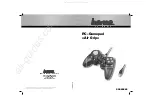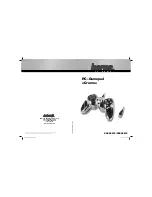
➃
Servo Tuning
27
Integral Feedback Control (
SGI
)
Using integral feedback control, the value of the control signal is integrated at a rate
proportional to the encoder position error. The rate of integration is set by the Servo Gain
Integral (
SGI
) command.
The primary function of the integral control is to overcome friction and/or gravity and to reject
disturbances so that steady state position error can be minimized or eliminated. This control
action is important for achieving high system accuracy. However, if you can achieve
acceptable position accuracy by using only the proportional feedback (
SGP
), then there is no
need to use the integral feedback control.
In the task of reducing position error, the integral gain (
SGI
) works differently than the
proportional gain (
SGP
); this is because the magnitude of its control signal is not dependent
on the magnitude of the position error as in the case of proportional feedback. If any position
error persists, then the output of the integral term will ramp up over time until it is high
enough to drive the error back to zero. Therefore, even a very small position error can be
eliminated by the integral feedback control. By the same principle, integral feedback control
can also reduce the tracking error when the system is commanded to cruise at constant
velocity.
Controlling
Integral Windup
If integral control (
SGI
) is used and an appreciable position error has persisted long enough
during the transient period (time taken to reach the setpoint), the control signal generated by
the integral action can end up too high and saturate to the maximum level of the controller's
analog control signal output. This phenomenon is called integrator windup.
After windup occurs, it will take a while before the integrator output returns to a level within
the limit of the controller's output. Such a delay causes excessive position overshoot and
oscillation. Therefore, the integral windup limit (
SGILIM
) command is provided for you to
set the absolute limit of the integral and, in essence, turn off the integral action as soon as it
reaches the limit; thus, position overshoot and oscillation can be reduced (see illustration
below). The application of this feature is demonstrated in Step 4 of the Tuning Procedure
below.
Without
SG IL IM
Max. Analog Output (+10V)
Min. Analog Output (-10V)
0V
Windup
Duration
(wd)
wd
wd
Internal
Integral
Value
Integral at T1
T1
Position
Time
Actual Output
Generated
by the Integral Term
Position Setpoint
(
D
Command)
Position Overshoot
Position Error at T1
With
SG IL IM
Max. Analog Output (+10V)
Min. Analog Output (-10V)
0V
Integral
Windup Limit
(
SGILIM
)
Position
Time
wd
Position Setpoint
(
D
Command)
Velocity Feedback Control (
SGV
)
















































